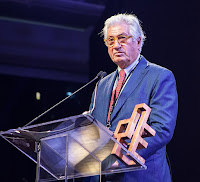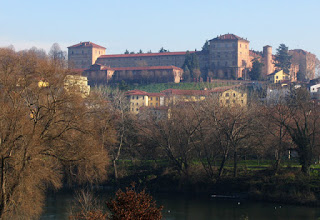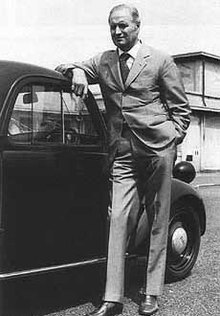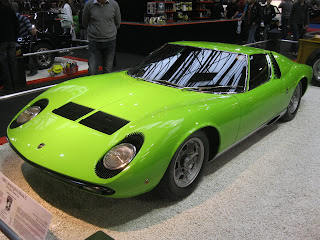Took part in 1961 rebellion that left Ferrari on brink
The automobile engineer Giotto Bizzarrini, a key figure in the development of Ferrari’s 1960s sports car, the 250 GTO, was born on this day in 1926 in Quercianella, a seaside village on the coast of Tuscany..jpg)
Giotto Bizzarrini was a
key Ferrari engineer
Bizzarrini famously joined with two other key engineers and several more employees in quitting Ferrari in October 1961 after a colleague had been sacked by founder Enzo Ferrari following a row over Ferrari’s wife, Laura, interfering in how the company was run.
Their walk-out left Ferrari effectively with no engineers to further develop on-going projects. The marque was already at a low point following the deaths of five of their main drivers in crashes between 1957 and 1961, one of which, at Monza in 1961, saw 15 spectators also lose their lives.
Enzo Ferrari, who was accused of running his company like a dictator, is said to have considered winding it up after Bizzarrini and the others left. The episode is remembered in Ferrari’s history as ‘the Great Walkout’.
Bizzarrini was born into a wealthy family from Livorno. His father was a landowner and his grandfather, also called Giotto, had worked with Guglielmo Marconi on his development of the wireless telegraph.
After obtaining a degree in engineering from the University of Pisa, in 1954 Bizzarrini began his career in the automobile industry with Alfa Romeo, where he trained to be a test driver. He felt it important to his work as an engineer that he understood from a driver’s point of view the problems he was asked to solve.
_2.95.jpg) |
| The Ferrari 250 GTO, developed by Bizzarrini, is still seen as one of Ferrari's best cars |
Bizzarrini’s most notable achievement at Ferrari was the development of the 250 GTO sports car, which even 60 years after it went into production is still regarded as one of the greatest Ferraris. In response to Enzo Ferrari’s concerns over competition from the Shelby Cobra and Jaguar E-Type Lightweight, Bizzarrini developed a shorter wheelbase than the standard 250 GT to improve its handling, as well as more aerodynamic bodywork.
The 250 GTO was capable of reaching 174 mph, which was unheard of at the time. The car won the GT world championship in its class in 1962, 1963 and 1964.
Despite the governing body of motorsport requiring that a minimum 100 examples of a car to be built in order to compete in GT events, only 39 examples of the 250 GTO were built. Enzo Ferrari created the impression that more cars existed by giving them non-consecutive chassis numbers.
 |
| Bizzarrini (right) speaks to the driver after a test run of the prototype 250 GTO in 1961 |
It was Bizzarrini’s success in turning the 250 into a serial winner that made his departure such a serious blow, although in the event the project was completed successfully in his absence.
The Great Walkout came against a background of rising tensions at Ferrari in which sales manager Girolamo Gardini frequently argued with Enzo Ferrari’s wife, Laura. Matters came to a head when Gardini was joined by Bizzarrini and two other senior staff in demanding that Laura’s involvement with the running of the company. Enzo Ferrari rejected their demands and the four left, along with several other personnel. It has never been entirely clear whether they resigned, or were sacked.
After Ferrari, Bizzarrini worked for Scuderia Serenissima, the Venice-based racing team run by Count Giovanni Volpi, whose father, Count Giuseppe Volpi, was the founder of the Venice Film Festival, and had a spell with Lamborghini, developing the first of the marque’s successful V12 engines.
His company, Società Autostar, then won a contract with Iso Autoveicoli, building the Iso Rivolta IR 300 and the Iso Grifo. He left Iso after another dispute and began building cars under his own name, starting with the Bizzarrini Grifo Stradale in 1965.
The car evolved into the Bizzarrini 5300 GT Strada, which was produced between 1965 and 1968. Bizzarrini ran into financial difficulties and Bizzarrini Spa was declared bankrupt in 1969, after which his career as an automobile manufacturer was over.
As a consultant and university lecturer, however, he remained an influential figure in the industry, working well into his 80s.
Travel tip: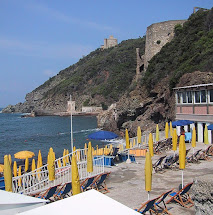
A beach on the rocky waterfront at
the seaside village of Quercianella.
Quercianella, where Bizzarrini was born, is a small hamlet situated some 15km (nine miles) south of the port of Livorno on the Tuscan coast, from which it is separated by a stretch of rocky coastline known as Il Romito. Surrounded by tall cliffs lined with pine forests. The village is largely residential but has a small public beach and a salt-water swimming pool. The sea off Quercianella has been praised for its cleanliness and is popular with water sports enthusiasts and has abundant fish stocks. The Quercianella coastline was chosen by a former prime minister, Sidney Sonnino, who led two governments in the 1900s, to build the Castello Sonnino, a neo-medieval style castle residence built on the site of a 16th-century fort built by the Medici.
Travel tip:Livorno's duomo, the Cathedral of St Francis
of Assissi, originally built in the 17th century
The port of Livorno is the second largest city in Tuscany after Florence, with a population of almost 160,000. Although it is a large, industrialised commercial port, it has many attractions, including the elegant Terrazza Mascagni, a waterside promenade with checkerboard paving, and its historic centre – the Venetian quarter – which has a network of canals and a tradition of serving excellent seafood. Situated next to Terrazza Mascagni is the Livorno Aquarium, which has 33 exhibition tanks containing around 300 different species. The city’s cathedral, commonly called Duomo di Livorno and dedicated to Francis of Assisi, can be found on the south side of Piazza Grande.
Also on this day:
1772: The birth of Maria Theresa, the last Holy Roman Empress
1861: The death of Camillo Benso, Count of Cavour, Italy’s first prime minister
.JPG)

